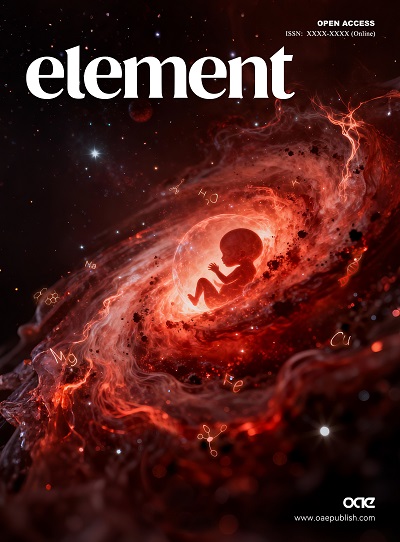Element is an international peer-reviewed, gold open-access journal exploring the dual dimensions of "Element" and "Core." The journal highlights life sciences and medicine while embracing chemistry, engineering, materials science, and agronomy, publishing cutting-edge research that transcends disciplines and uncovers the fundamental essence of scientific innovation.
The journal welcomes submissions of original research, review articles, editorials, correspondence, and news on the following topics and related areas:
Research focused on "elements" (the material foundation): clear disciplinary scopes
We prioritize submissions that explore elements' properties, functions, and applications across five key disciplinary areas - each with distinct, actionable research directions to guide contributors:
• Life Sciences: Studies on elemental roles in biological processes, including (but not limited to) metallic ion signaling (e.g., zinc sparks in embryonic development, copper's role in immune cell activation), elemental metabolism (e.g., iron-sulfur cluster assembly in mitochondria, selenium's integration into selenoproteins), and element-dependent cell fate (e.g., ferroptosis, cuproptosis).
• Medicine & Public Health: Research linking elements to disease mechanisms and interventions, such as elemental imbalance in pathogenesis (e.g., iron overload in thalassemia, iodine deficiency in cretinism), element-based therapeutics (e.g., arsenic trioxide for leukemia, platinum complexes for cancer), and public health strategies (e.g., selenium-fortified salt for Keshan disease, fluoridated water for dental caries prevention).
• Chemistry: Investigations into elemental chemistry, including atomic structure and reactivity (e.g., noble gas compound synthesis, superheavy element stability), catalytic processes (e.g., elemental catalysts in carbon capture, enzyme-mediated elemental transformations), and elemental material design (e.g., metal-organic frameworks for element storage).
• Environmental & Earth Sciences: Work on elemental cycles and impacts, such as global elemental circulation (e.g., carbon sequestration in oceans, mercury deposition in ecosystems), geochemical distribution (e.g., selenium-deficient soil mapping, arsenic contamination in groundwater), and elemental effects on biodiversity (e.g., trace elements in pollinator health, heavy metals in aquatic life).
• Engineering & Materials Science: Innovations in elemental applications, including functional materials (e.g., silicon-based photovoltaics, lithium-ion battery cathodes), elemental recycling (e.g., rare earth element recovery from e-waste), and industrial elemental control (e.g., heavy metal removal in manufacturing wastewater).
Research exploring "element" (the fundamental essence/genius): crossing disciplinary borders
Beyond material elements, Element embodies the "fundamental essence" - the "Genius" (as translated in Chinese) - of scientific inquiry. We welcome groundbreaking work that probes the core logic of any discipline, even without direct ties to traditional elements. Key disciplinary areas here include:
• Life Sciences: Studies on foundational biological mechanisms, such as the "Genius" of cell fate determination (e.g., stem cell differentiation hierarchies), genetic information transmission (e.g., DNA repair mechanisms), and intercellular communication (e.g., signal transduction cascades).
• Medicine: Research into the "Genius" of disease origins and treatments, including the root causes of chronic illnesses (e.g., metabolic syndrome's molecular triggers), precision medicine targets (e.g., genetic markers for drug response), and regenerative therapy principles (e.g., tissue engineering scaffolds).
• Physics & Astronomy: Explorations of cosmic and quantum "Genius," such as the origin of elements in the universe (e.g., stellar nucleosynthesis), quantum behavior of fundamental particles (e.g., Higgs boson's role in mass generation), and planetary habitability's elemental prerequisites (e.g., iron cores for magnetic fields).
• Chemistry: Investigations into the "Genius" of matter transformation, including reaction kinetics (e.g., enzyme catalytic efficiency limits), chemical bonding principles (e.g., hydrogen bond dynamics), and synthetic chemistry fundamentals (e.g., green chemistry for sustainable synthesis).
• Agronomy & Environmental Engineering: Work on the "Genius" of ecosystem and agricultural sustainability, such as soil-plant elemental symbiosis (e.g., phosphorus uptake in crops), climate-resilient agriculture (e.g., elemental regulation of drought resistance), and ecological restoration (e.g., elemental remediation of degraded lands).



